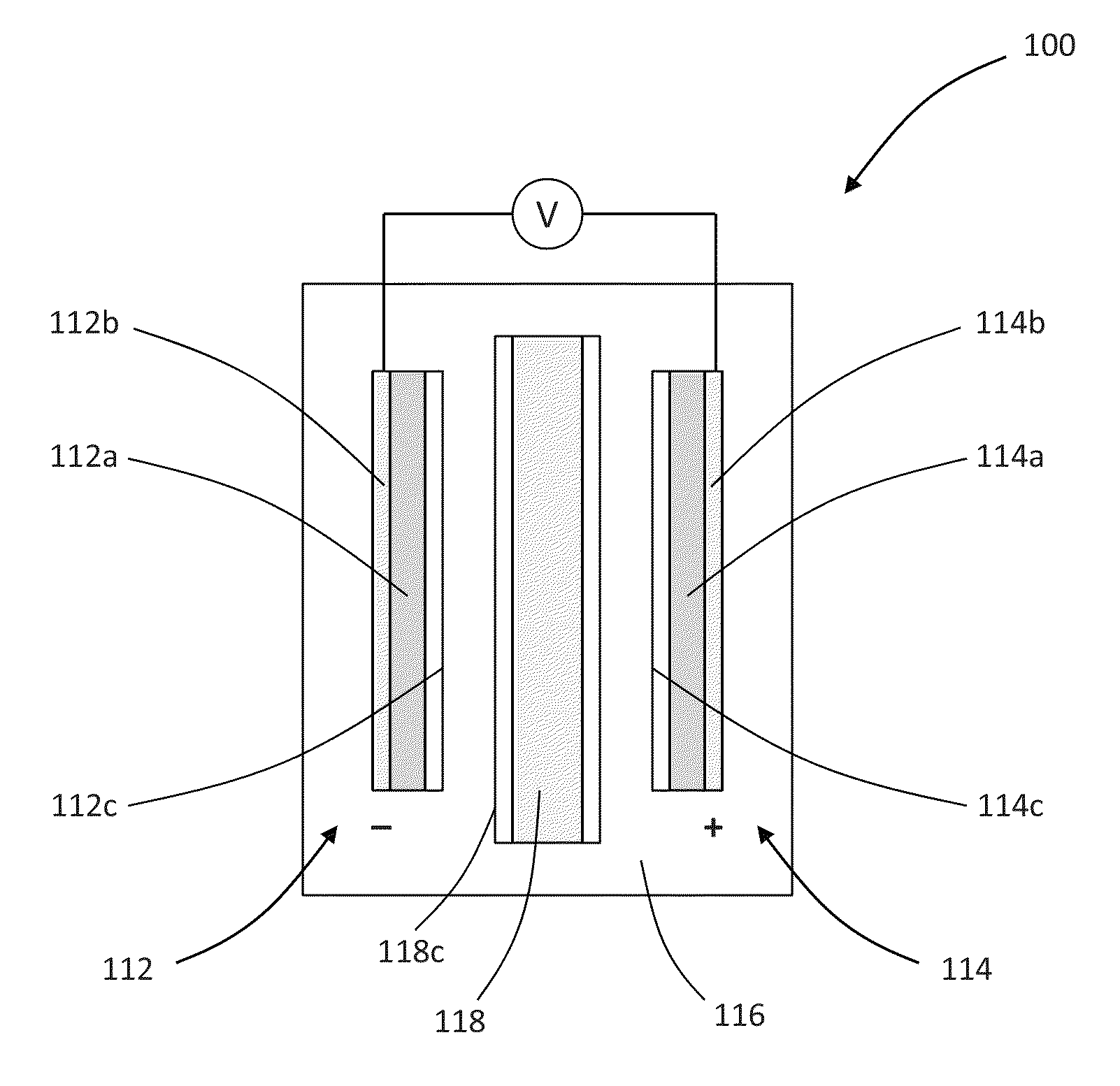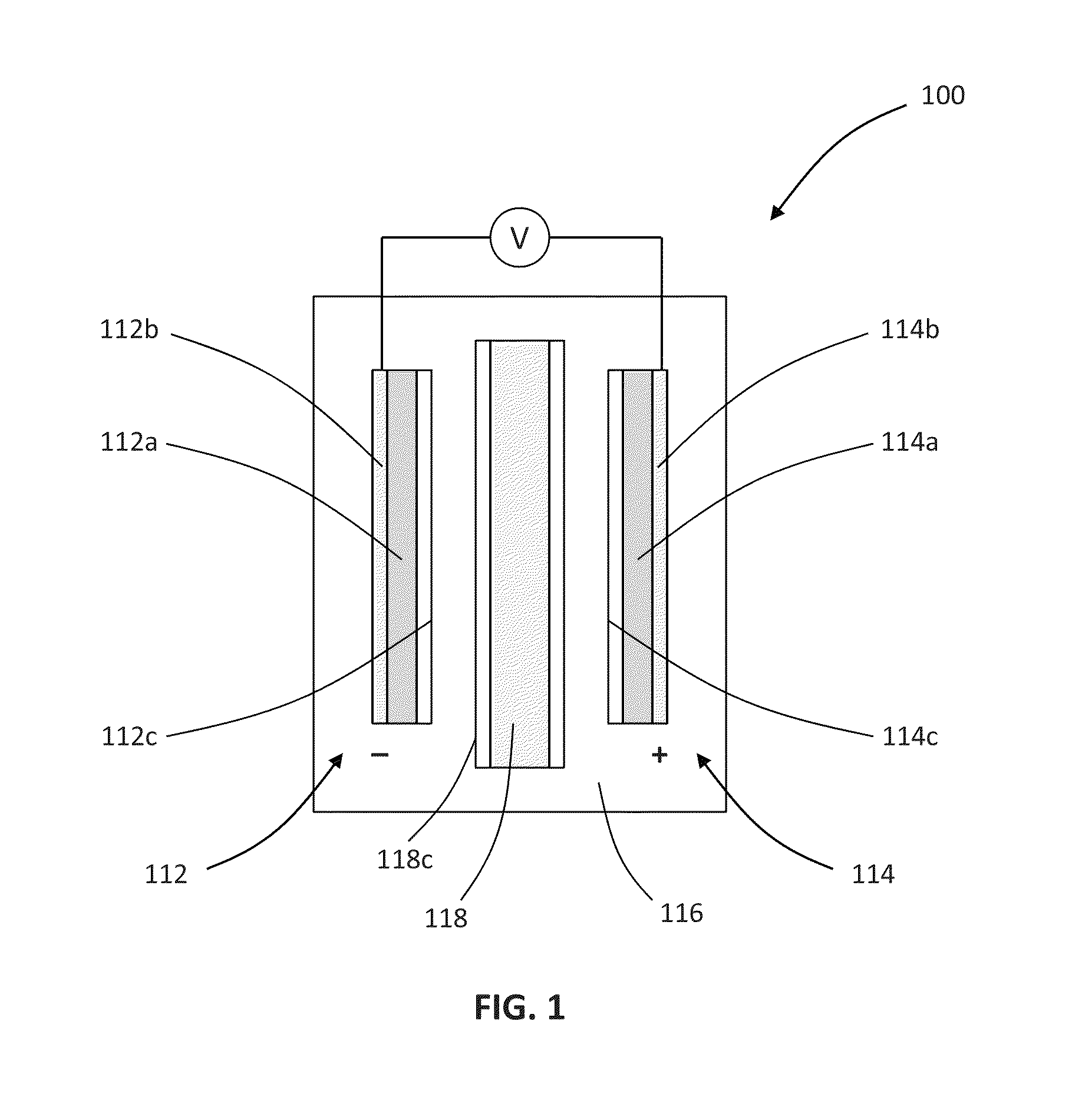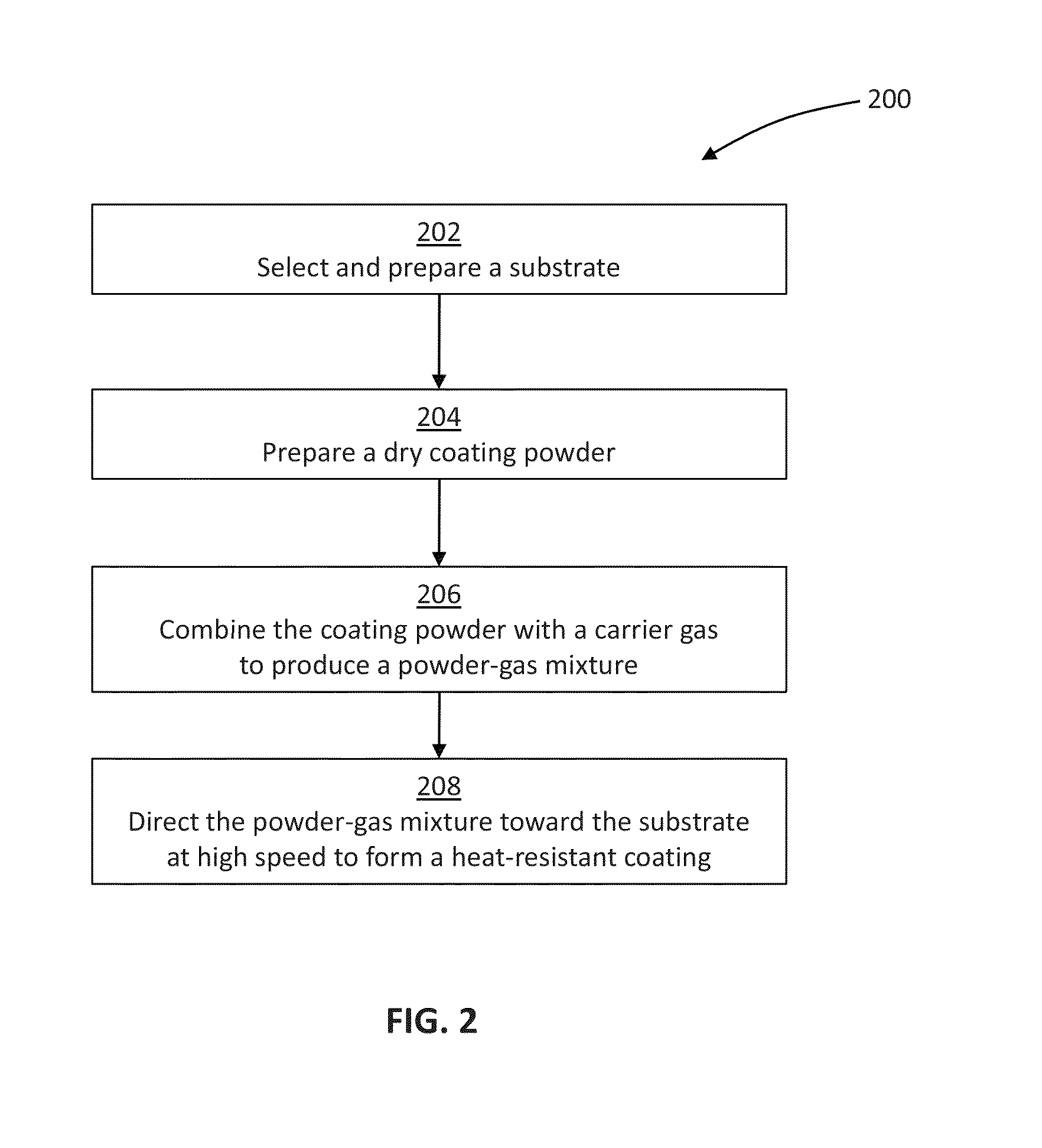Heat resistance layer for nonaqueous secondary battery, process for producing the same, and nonaqueous secondary battery
a secondary battery and heat resistance layer technology, applied in the field of nonaqueous electrochemical cells, can solve the problems of solvent penetration, low deposition rate, and high cost of ceramic coating application methods, and achieve the effect of increasing mechanical strength and compression resistance of the coated component and preventing the cell from short circui
- Summary
- Abstract
- Description
- Claims
- Application Information
AI Technical Summary
Benefits of technology
Problems solved by technology
Method used
Image
Examples
example 1
1. Example 1
Deposition of Heat-Resistant Coating onto a Negative Electrode
[0072]A negative electrode was manufactured by applying an active slurry onto an underlying conductive layer. The active slurry comprised 7 wt. % PVDF binder, 85 wt. % graphite active material, and 8 wt. % carbon black additive. Graphite particles in the active slurry were 15 μm to 20 μm in size. The conductive layer comprised a 20 μm thick copper foil sheet. The active slurry was applied to both sides of the copper foil sheet at a thickness of about 60 μm per side and allowed to dry. A SEM photograph of the outer surface of the resulting active layer is shown in FIG. 4A at 460× magnification.
[0073]A powder-gas mixture was sprayed on top of one of the previously-formed active layers to form a heat-resistant coating on one side of the negative electrode. The powder in the powder-gas mixture comprised 90 wt. % α-Al2O3 ceramic powder with an average particle size of 1 μm, and 10 wt. % PVDF binder powder with an a...
example 2
2. Example 2
Deposition of Heat-Resistant Coating onto a Positive Electrode
[0078]A positive electrode was manufactured by applying an active slurry onto an underlying conductive layer. The active slurry comprised 4 wt. % PVDF binder, 87 wt. % LiCoO2 powder, 5 wt. % graphite additive, and 4 wt. % carbon black additive. LiCoO2 powder particles in the active slurry were about 2 μm in size. The conductive layer comprised a 20 μm thick aluminum foil sheet. The active slurry was applied to both sides of the copper foil sheet at a thickness of about 120 μm per side and allowed to dry. A SEM photograph of the outer surface of the resulting active layer is shown in FIG. 6A at 5000× magnification. Compared to the negative active layer of FIG. 4A, the positive active layer of FIG. 6A was more smooth.
[0079]A powder-gas mixture was sprayed on top of one of the previously-formed active layers to form a heat-resistant coating on one side of the positive electrode. The powder in the powder-gas mixtu...
example 3
3. Example 3
Deposition of Heat-Resistant Coating onto a Polymeric Separator
[0084]An enhanced separator was manufactured by applying a heat-resistant ceramic coating onto an underlying polyethylene separator. The underlying polyethylene separator had a thickness of about 20 μm and a porosity of about 45%. A SEM photograph of the outer surface of the polyethylene separator is shown in FIG. 8A.
[0085]A powder-gas mixture was sprayed on top of the polyethylene separator to form a heat-resistant coating on the polyethylene separator. The powder in the powder-gas mixture comprised 95 wt. % α-Al2O3 ceramic powder with an average particle size of 0.1 μm, and 5 wt. % PVDF binder powder with an average particle size of 2 μm. The powder particles were ground and mixed before encountering a carrier gas at a temperature of 120° C. and a pressure of 20 atm (2027 kPa).
[0086]The heat-resistant coating was applied to the polyethylene separator at a density of about 1 mg / cm2 and a thickness of about 3...
PUM
| Property | Measurement | Unit |
|---|---|---|
| porosity | aaaaa | aaaaa |
| thickness | aaaaa | aaaaa |
| speed | aaaaa | aaaaa |
Abstract
Description
Claims
Application Information
 Login to View More
Login to View More - R&D
- Intellectual Property
- Life Sciences
- Materials
- Tech Scout
- Unparalleled Data Quality
- Higher Quality Content
- 60% Fewer Hallucinations
Browse by: Latest US Patents, China's latest patents, Technical Efficacy Thesaurus, Application Domain, Technology Topic, Popular Technical Reports.
© 2025 PatSnap. All rights reserved.Legal|Privacy policy|Modern Slavery Act Transparency Statement|Sitemap|About US| Contact US: help@patsnap.com



